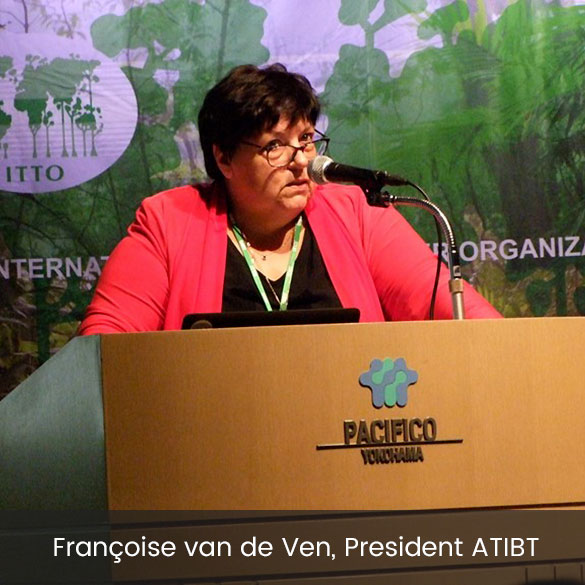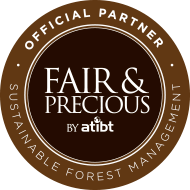

News | 29.05.2020
Today it is certainly easier and more efficient to ask 1 million farmers with various agroforestry systems (AFS) based on coffee, cocoa, rubber, coconut or cloves to include 10 trees in their AFS than to plant and monitor over 20 to 40 years forest plantations of timber or energy in the tropics to achieve the same number of trees planted.
Introduction
The main tropical AFS are often referred to as complex: multi-stage and multi-species.
They most often include :
It can be based on i) coffee or cocoa, with shade trees for shade around 30%, ii) rubber trees or also specific trees such as damar (Shorea javanica or durian/surian in Indonesia with fruit trees or timber trees, iii) idem with cloves in AFS or in parks in Madagascar and iv) with coconut including possibly also livestock and v) home gardens.
After a strong deforestation linked to the establishment of all perennial crops, AFS allows to consider a kind of reforestation with an important biodiversity. In the plains of Sumatra and Kalimantan in Indonesia, part of the plant biodiversity is now in the AFS following the disappearance of forests.
 Home garden: based on coconut trees, fruit trees and timber/fuel wood
Home garden: based on coconut trees, fruit trees and timber/fuel wood
1- The main AFSs that include timber and energy wood are today :

Agroforestry system based on clonal hevea with energy trees (A mangium), timber (Meranti and nyatoh) and fruit trees

Jungle Rubber, Kalimantan Indonesia

Damar based agro-forest , in Krui, Sumatra, Indonesia

Fruit baesd agro-forest with Castahna do Brazil , cacao and timber, Amazon Brazil

Hybrid arabica coffee and cedrella agroforest, Nicaragua
2-Examples of ASF with timber
Energy wood is very present (i) in the Sahel for household energy needs, (ii) in Madagascar on the east coast in the ASF a clove for feeding stills for distillation (iii) in the Comoros for Ylang-Ylang: old local trees, old fruit trees, eucalyptus, pine, Acacia mangium and the others are all used and valued for this purpose.

Agroforest with cloves, fruit trees and fuel wood for the distillation of Ylang Ylang, Anjouan, Comoros

Agroforest with cloves, fruit trees and fuel wood, East Coast, Fénérive-Est, Madagascar

Clove and nutmeg based agroforest with fruit trees and timber, in Ternate, Moluccas, Indonesia
For lumber, production often depends on the national policy on “tree tenure”, either the tree belongs to the farmer and he can sell it, or it does not belong to him and the interest in promoting its cultivation is questioned (the case of Ivory Coast in particular):

Cocoa and mahogany 30 years old,in Paragominas, Amazonia, Brazil

Agroforestry with acai, fruit and mahogany trees, Amazonia, Brazil
Another form of valuation concerns fruit trees with valuable wood: durian, for instance.
One of the major issues concerns the balance between native vs. introduced species.
3- Effectiveness of quality reforestation programs for forestry companies
Sustainable cultivated forests are a success in Europe.
In comparison, few logging companies have made investments in sustainable plantations in Sumatra or Kalimantan except Java Teak plantation – a notable exception, which have been remarkably managed since 1815. This failure in Indonesia and globally throughout South East Asia is due to low interest due to too a long return on investment (35/50 years) etc.
In tropical areas, if there is no effective reforestation at the level of forestry companies, who is able to produce quality timber trees, at a lower cost, without significant investment and with the possibility of waiting for many years ?
4- The peasant : the future forester?
Who is best placed to integrate trees into complex AFS or even simple AFS (coffee or cocoa shade…)? The answer is probably on the side of the farmers who insert the trees in current agroforestry systems without major problems at marginal cost, or even possibly in “woodlot” (mini forest plot) as in Kenya. The sine qua non condition is that the farmer benefits from his investment: that the “tree tenure” policy gives full ownership of the rights and uses of the tree to the person who grows it.
Of course, there are still problems of access to quality plant material (pine, teak, Mahogany…).
Markets play a major role in creating production opportunities:
Access to markets and the specific type of market are therefore the keys to the development of decentralised, atomised, non-specialised forestry, and with the concomitant development of local intermediaries capable of processing trees from field felling to timber transformation (sawmill).
It is necessary to promote access to services for the collection and processing of trees by third parties with an equitable distribution of the margin by the different actors.
Farmers will thus have a better cost-effectiveness ratio for this type of plantation and a great flexibility of integration and maintenance of the trees in existing systems: in SAFs, woodlots, hedgerow systems, etc.
The national policy must integrate a “tree tenue policy and right favourable” to the production of wood by farmers and recognize their rights, thus securing the rights of farmers over their trees.
It would be better to involve ALL stakeholders, perhaps in systems such as “innovation platforms” including producers, private tree cutting and processing services, transport, forestry companies, raw wood processing companies (sawmills, artisans, etc.), etc.
The possible role of certification remains to be explored because none of certification is currently in place for wood produced by farmers.
Authors:
Eric Penot, CIRAD, UMR Innovation, co-facilitator of the agroforestry group at CIRAD and member of the agroforestry group of the Cité du Développement Durable in Nogent sur Marne.
Links :
The author’s publications page (Eric Penot)
CIRAD agroforestry publications, including those of the author
tag(s) :

Engage
Do you want forest resources to be preserved?
Do you want to contribute to helping local populations and to protect the fauna and flora?
Do you want to help us promote a sustainable material with exceptional qualities?
